This week my classes are learning all about the Pythagorean Theorem. I confess…..this is one of my favorite units. I really get into character and tell students the story of how Pythagoras was persecuted for his knowledge and beliefs, founded a school where they met in secret. It was said that the society was so secret that to be admitted you needed a pentagram on your palm. And of course, as I say this, I show my palm so they would see I would be admitted, lol.

Pythagoras did not allow his teaching to be written down, he passed them on to students. So we only have evidence from his students that Pythagoras taught and used this formula for which he is named. Middle school students always love a story, but even my high school students enjoy a good story.
The better story is that the idea of Pythagorean Triples existed long before (by 1,000 years) Pythagoras was even born. It existed in in ancient writings and there is even some evidence that the formula was originally written and developed in a book by a Hindu mathematician 200 years before Pythagorean existed. Which is a good reminder to ALWAYS write things down, or someone like Pythagoras will take your ideas and name them.

Since our curriculum teaches Pythagorean Theorem in second semester and properties of right triangles first semester (early), it is important to review a little. Yes, I know they have seen right triangles in elementary and middle school, but they still are more successful if they review and fill in possible gaps.
What to Review Before Teaching Pythagorean Theorem Formula
1. Connect with Prior Knowledge and Current Lessons
I like to use the activity Notice and Wonder to have students connect with prior knowledge. Here is one activity I have used:
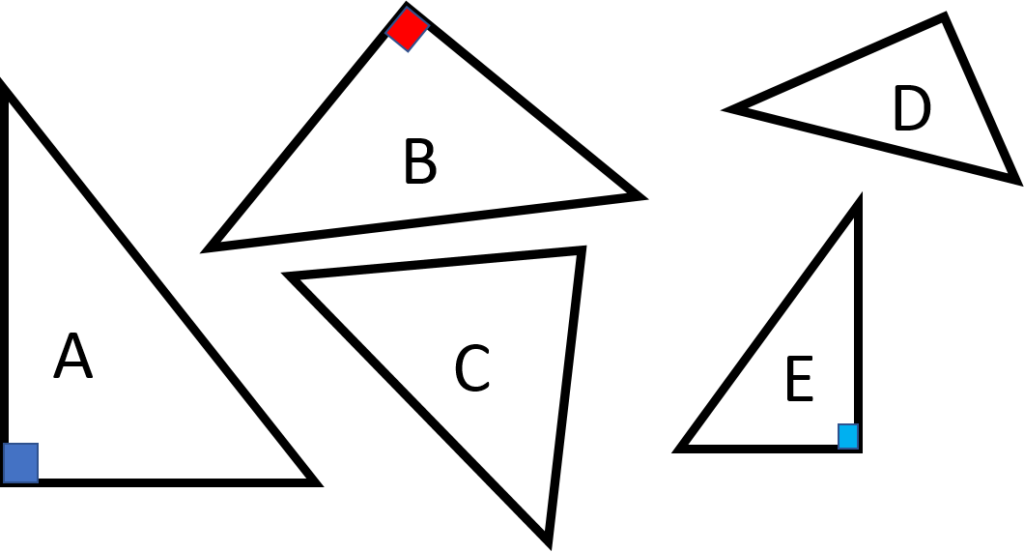
Students noticed:
“All triangles are right triangles”
“Some triangles are marked as right triangles…”
“It looks like there are 4 right triangles…”
“I wonder if the triangles are similar…”
“I wonder if Triangle C is right..”
“I wonder if I could transform any of the triangles into another”
So now I know that students had noticed the markings we use for right triangles, some are thinking about similarity and others are connecting the picture to possible transformations. Some students identified the number of right triangles correctly, others were using their eyes instead of markings–this is something I will have to address.
2. Use Diagrams and Definitions to Discuss Parts of a Right Triangle
Students are often confused with what “legs” are as opposed to the “hypotenuse”. It is important they understand the difference so they will be able to use the formula correctly.
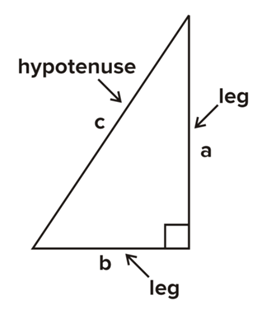
It Also Helps To Have Different Triangles In Different Orientations.
The Hypotenuse is
- The longest side
- The side Opposite the right angle
- The side that doesn’t “touch” the right angle
- Not “adjacent” to the right angle
- Not a leg
Begin the Lesson without Variables
3. Introduce the Formula without Letters

Since the students initially have trouble identifying that a, b, c, I reinforce the parts of the triangle. The first few problems only have students solving for the hypotenuse. Once they have mastered solving for that part, I then add triangles to solve for missing legs.
Practice
4. Use Technology
Desmos
There are several ways to introduce technology into lessons. One great activity is to have students use the Desmos Activity. Here is the link for this activity and one of the slides. Students demonstrate their thinking and the teacher can share the responses with the class (you can turn off the student names for privacy).
Here is one of the slides, with a space to show work. Desmos activities can be assigned through Google classroom and Desmos will record the student answers for review later.

Kahoot
I need to confess now that I am not a fan of Kahoot. Students are less concerned with right answers that answering quickly when the timer is on. When using in class, I always turn the timer off or at lease extend it to the longest times so students do not answer without thinking. If the timer if off, they are more likely to worry about their answers.
This slide asks which side is the hypotenuse.
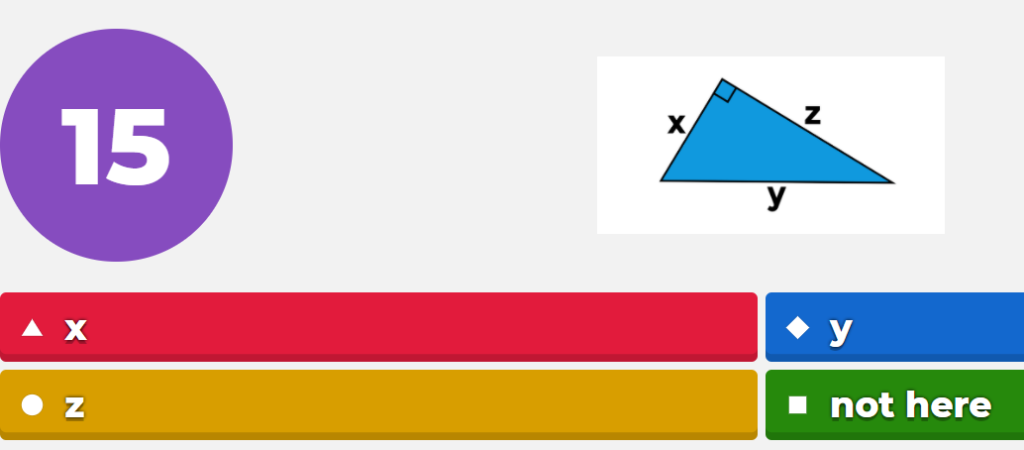
There are some great questions for a quick review or to use at the end of the lesson. It is labeled as 8th grade, so if you use if for any other grade, I would save it to my account and edit the title.
Boom Cards
This is a picture reveal, with 32 problems at the Boom Learning website. And if you just want the problems without the picture reveal, Here are 20 Problems. Both are also available at my TPT store as well here and here. You do not have to pay for an account to use Boom Cards. You can sign up for a free account and assign the fast pin link for students to play. More about assigning fast pins in this blog.

Shodor
This site has an interactive activity for students to solve right triangles. There are three levels of play, the level three using sides with decimals, the first level has sides with integers. It is free, it is great practice and helps reinforce the concepts. Pythagorean Explorer. This is a snip from the site:
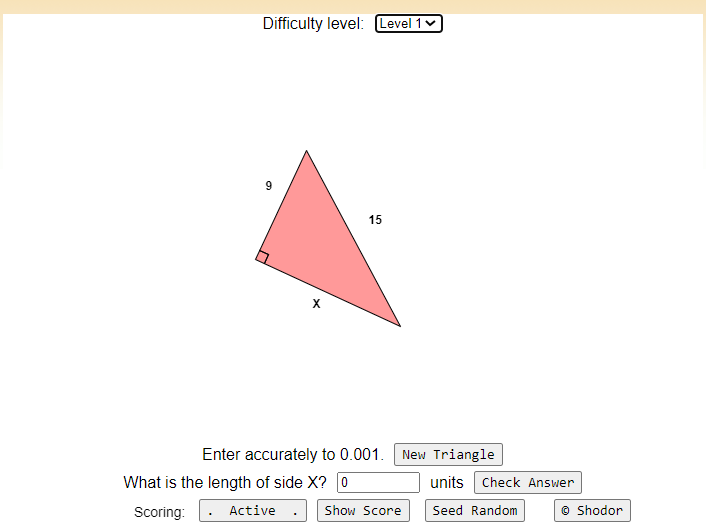
5. Collaborative Activities
Corner Collaboration
Corner Collaboration is another of those collaborative activities that I miss because I am still virtually teaching. There are 4 versions of a worksheet. Students begin with a home group and help each other with the questions (all different).
When some time has passed (at teachers observation or a predetermined work time) a bell is rung (or buzzer, or teacher signal) and students get up and move to a specified corner to meet with other students who have their same version of the worksheet. They can compare answers, get help with steps, understand the process or just stand and talk about the problems. When they have finished talking, they return to their home group to fix and answers that were wrong.
When students work together to talk about math, they all win. Students develop greater vocabulary speaking with other students than they would on their own, or even with independent activities from the teacher.
This works for so many reasons, adding movement to the classroom sends a rush of oxygen to the brain. Talking with others gives support and opportunity to practice vocabulary and explanations.
Paper Chains
My students love making paper chains. They work with one or two other students to assemble a chain which is an ordering activity. They begin with the strip marked start, solve the problem and find their answer on another strip. They fasten together (like the old Christmas chains on the tree) until all the problems are solved. This is my students favorite activity. Read more about paper chains here.
The Pythagorean Theorem Game
This is an activity that I have used from a textbook publisher. It has a game board, which will require some teacher prep in advance. The Pythagorean Theorem Game also requires number cubes (you can make these if you don’t have dice). It is a fun game, and the cards have the answers, so students will be checked on their answers as they go. I change this that the person reads the question to all the other players, and those that get it correct get to move the spaces.
Assess Understanding
6. Pythagorean Theorem Projects
At the end of the unit, instead of a test, try assigning a project that will bring all the pieces together. I would suggest students be allowed to work together if you have students who are English Language Learners as I do. It helps them understand the fine points of the project, the math and expectations. And all students feel supported when they know they can get help from someone. My students have all enjoyed the fencing project, the art project and the google maps project.
The beauty of this project (aside from being free) is that the Pythagorean Theorem is used as a tool, not the end result. In other words, this is a real life activity building a fence around a property that needs a person to use the Pythagorean Theorem to measure the sides of the property. It also uses graphing, calculating prices, calculating tax and deciding which fencing company is the best deal.
This activity gives the students 3 options to use the formula to solve a word problem. They draw and color their model (great for display in the classroom) and explain their solution. Includes a rubric. I especially like the word problem about buying a table and deciding if it will fit through the door.
This activity contains a google map image where cable is being placed and asks students to calculate the amount of cable needed. Of course, students will need to use that Pythagorean theorem to find the answer.
If students need to understand the value of math, here is that famous clip of Who Wants to be a Millionaire where not knowing math cost the contestant $15,000.
Who Wants to Be a Millionaire: The cost of not knowing math
I hope some of these tips will help you as you teach this unit. I always like to vary the activities for students so they are not bored and are challenged. Let me know how it goes by leaving a comment. If you have any special activities that you find successful, I would love to know.
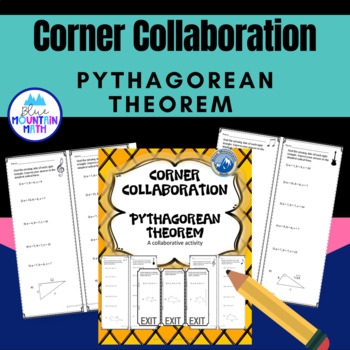
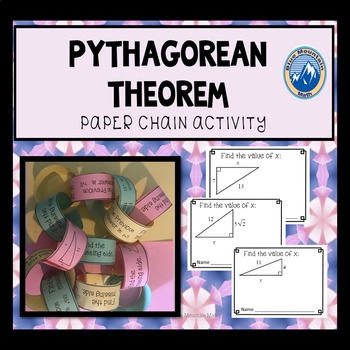










Leave a Reply